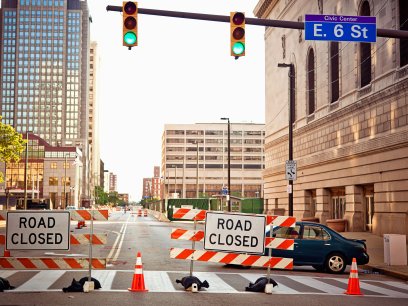
Colorful neighborhood lighting displays and glowing trees are a sign of the season, dating back hundreds of years! Before Thomas Edison's creation of the first electric lighting display for the holidays in 1880, people used to use candles to decorate for (risky!) seasonal cheer. Since then we've come a long way, with versions of Edison's incandescent bulbs appearing in homes and neighborhoods across the world, in various shapes and colors. However, all those twinkling lights can drive up energy demand and result in big home energy bills, and still manage to cause an average of 200 home fires each year. What's a decorator to do?
Show your holiday spirit with LEDs (light-emitting diodes)! LED holiday lights consume about 75% less energy than traditional incandescent light strands and provide these great benefits:
- Safe: LEDs emit less heat than traditional bulbs, reducing the risk of fire and burns.
- Sturdy: LEDs are less likely to break because they are not made with glass.
- Long-Lasting: LEDs last up to 25 times longer than traditional bulbs—you could still be using the same LED string 40 years from now!

Once a light strand has reached the end of its life, you can actually recycle them. Many home improvement stores across the country have holiday light takeback programs to recycle the products.
Curious to learn more about how your holiday lights work? This explainer from the US Department of Energy walks you through the what, how, and why of all types of lights—including how to troubleshoot some common issues. Learn more about holiday lights.
Sources:
- Adams, Pat. 2014. "Top 5 Things You Didn't Know About Holiday Lights." US Department of Energy. Accessed December 5, 2017. https://www.energy.gov/articles/top-5-things-you-didn-t-know-about-holiday-lights
- National Fire Protection Association. 2017. "Home Christmas Tree Fires." https://www.nfpa.org/-/media/Files/News-and-Research/Fire-statistics-and-reports/Fact-sheets/ChristmasTreeFactSheet.pdf
- Wood, Daniel, and Sarah Gerrity. 2015. "How Do Holiday Lights Work?" US Department of Energy. Accessed December 5, 2017. https://www.energy.gov/articles/how-do-holiday-lights-work


